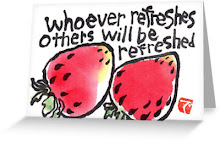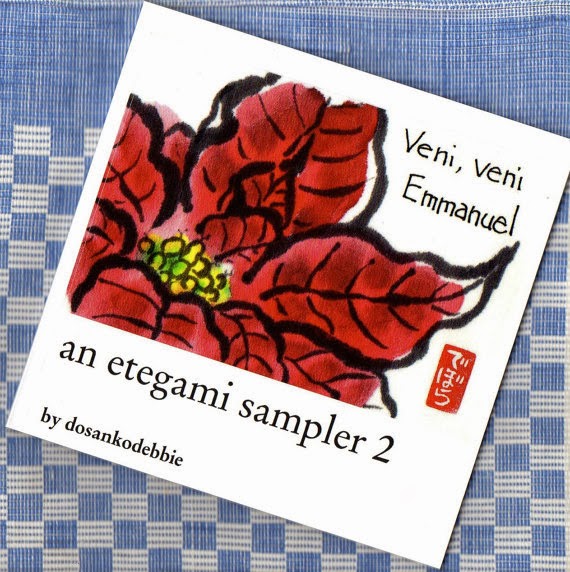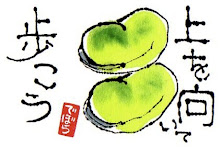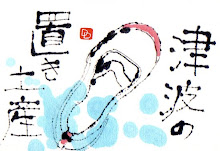
As the number of etegami I am committed to send in any given month keeps increasing, and the time I can spare for drawing them keeps decreasing, I find that doing a series on a particular theme helps me move forward at the desired pace. I had been doing this in a vague and limited sort of way all along, but exposure to the world of international mail artists, and their frequent topical mail art "calls," has given me a new appreciation for choosing specific themes to propel my work.
Last year, a brief obsession with geta inspired me to produce several etegami illustrating sayings having to do with these traditional Japanese wooden clogs. They turned out to be quite popular with my friends in both the East and the West, so I decided I would set myself a goal to produce 150 proverbs-themed etegami in 2010, at the rate of three per week. I was a little worried that setting such a long-term goal would become burdensome and take away the spontaneous pleasure of making etegami. But no-siree, quite the contrary! It seems that everywhere I look I see things that remind me of another proverb or saying, and I can hardly wait to get it on paper.
The most effective etegami is one that represents a concept considerably larger than you might expect from a simple, close-up drawing of what is often a single item, or sometimes even a fragment of one item. The accompanying words make this possible. But the whole concept doesn't need to be-- nor should it be-- spelled out. A little indirectness is best. Like haiku, there should be empty spaces for the observer to fill in with his own imagination.
The etegami I've posted above illustrates the saying: Warau kado ni wa fuku kitaru (Good fortune comes to the home where there is laughter). The image shows a cup of tea and a partly peeled tangerine. Imagine the low table around which the family is gathered--perhaps watching a funny show on TV. Whenever someone laughs, it shakes the table and spills the tea. It is a very famous proverb, so I wrote only the first half of it at the top of the card. In the bottom right corner is the character for good fortune (fuku). What do you think? Is that too indirect?
I've posted other examples of etegami from my Japanese proverbs series on the right side of this page. If you have time and interest in turning a favorite saying of your language or culture into an etegami, let's see what you can come up with! And don't forget the new Food/Recipe- themed mailart call I posted on the right (near the top) side of the page. I'm counting on you (yes, you!) to participate. he he :p































